Ask a Gear Guru: What’s the Best Gear for Swim Training When the Pool’s Closed?
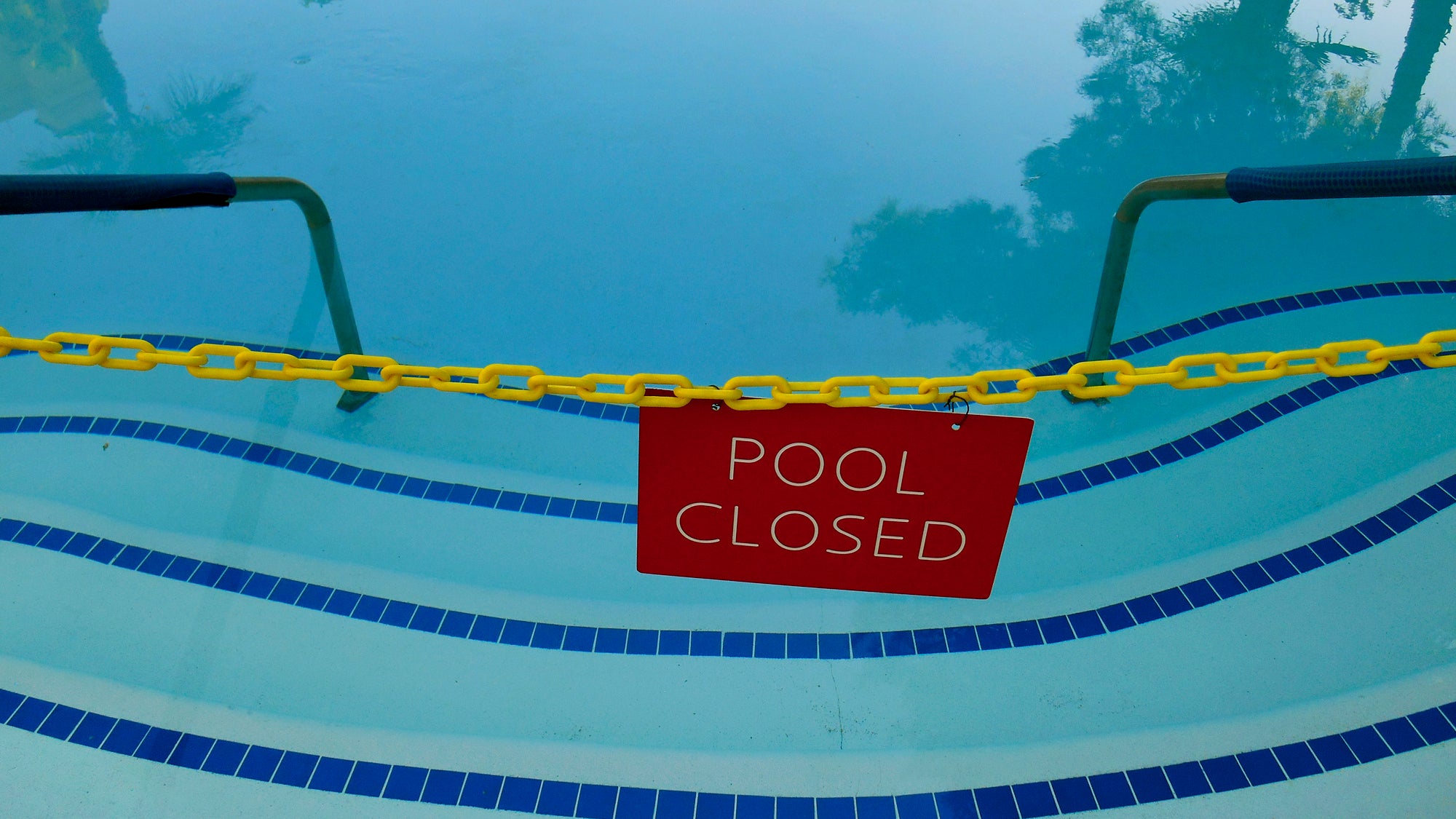
Sure, you might not be able to get to a pool now, and hopefully that’ll change sometime soon, but even then, there are times when we can’t hit the water, or the water we can hit isn’t worth so much as one lap. When these and those times happen, there are plenty of options for those motivated enough. And we triathletes, by nature, are one motivated crew. As someone who has traveled to some weird places to race and yes, admittedly done some pretty half-hearted training when I should have been at the pool, I can tell you from experience that the most important thing to do when you can’t get to a pool is to do anything you can to keep that motion going. So what can you do? What’s the best dryland gear for swim training when the pool’s closed? Read on.
What’s My Next-Best Option?
First, look at open-water availability—if the water’s still super chilly, you’ll need some very specific gear to brave that cold water if you want to make your training productive. If you’re just cold the whole time, you’ll simply be burning calories staying warm and not truly working out to your max potential. If you can’t get anything else, multiple layers of caps and wax ear plugs are the best first line of defense. For more specialized cold-water swimming gear, read this story we did a few weeks ago. Swimming in the open water will actually do wonders for your swim leg, maybe even more than a pool. Assuming you can’t get to some open water, or your area has restrictions against it, the next best thing is…
Open-Water Is Off The Table, Now What?
Ok, so you can’t swim in the open water in a way that’s actually useful (like maybe the open-water area is too small…). Start thinking about very small bodies of water that you might have access to: Your backyard pool, an oddly shaped community or hotel pool (assuming they’re open and safe), even a small bit of open water with a nearby dock. All you really need to get your swim on, is a body of water roughly 3-5 feet longer than you, about 4 feet wide, and a few feet deep. With the help of a homemade, or premade—see below—elastic swim belt attached from your waist to an object, you can get in a great stationary workout that will simultaneously help smooth out any dead spots in your stroke. Pro tale: My teammates and I spent a week using elastic waist bands in a hotel kiddie pool in Brazil leading up to a race when we couldn’t find anywhere else to swim. We ended up winning the whole thing—true story!
No Water To Be Found, I Guess I’m Screwed, Right?
Nope. If you really want to maintain or even build your swim strength, it’s time to get your MacGuyver on a little bit. There are a host of dryland options (a few listed below) across all kinds of prices that range from under $20 to $2,000 and up. Obviously the more you spend, the more closely you’ll be able to simulate a realistic swimming motion, but the bottom line is that with a little creativity and focus, a dry-bound triathlete can do quite a bit. In terms of using simple stretch bands, each brand has different thicknesses, so the most universal advice we can give is that the lightest level and sometimes the second lightest level is usually for rehabilitation and not particularly useful for swim training. The heaviest level is usually for very advanced swimmers (former college swimmers, maybe a lane-one masters swimmer); one level down from heaviest is usually good for a devout masters swimmer. Beginner triathletes or very very weak swimmers should be on the lower level of that middle ground, advanced triathletes who love using paddles and a pull buoy should be on the upper end. If you can try them out, you should be able to pull all the way through your stoke to full extension without straining and at the very front of your stroke, there should be no slack.
Of course there are also weight-training options that will help your swimming, but we won’t get into that gear in this piece. If you can’t get swim bands, weight training, or into any water at all, there’s always whipping your arms around wildly for an hour like a wacky waving-inflatable-arm-flailing-tube man you might find outside of a used car lot.
Now, before we move onto the gear itself, I’ll provide another (more reckless) no-water-swimming anecdote: In the three weeks leading up to an Otillo Catalina test event last year, I only did about 30 minutes to an hour of Halo bench pulling each day. While I didn’t exactly impress anyone with my swimming speed, I was still able to get through the roughly 7 miles of total swimming we did over two days intact with no shoulder injuries. For anyone wondering, I did actually swim before my inaugural ill-fated swimrun race in early March (for the grisly details, check out the race report).
Read on for the best gear for swim training when the pool’s closed:
The Best Gear For Swim Training When The Pool’s Closed And You’ve Got Some Water
NZ Stretchcordz S600 Safety Cord Belt
$36, Amazon.com
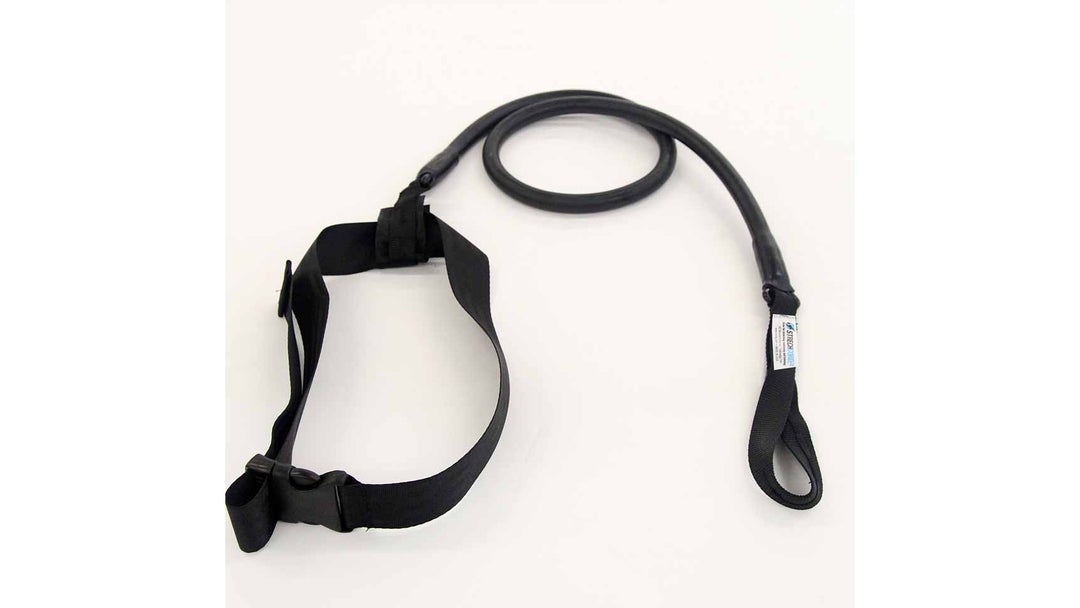
Ok, so you’re fortunate enough to have access to a home pool or a safe body of water, but no space to actually swim? Use this relatively inexpensive setup to simulate a VERY expensive flume-type system like an endless pool. The belt attaches to your waist, the other end attaches to a static spot. Not only will you get in a decent workout, but you’ll help smooth out your stroke as you feel those dead spots while pulling through.
The Best Dryland Pulling Gear For Swim Training When The Pool’s Closed
Finis Slide Dryland Trainer
$80, Finisswim.com
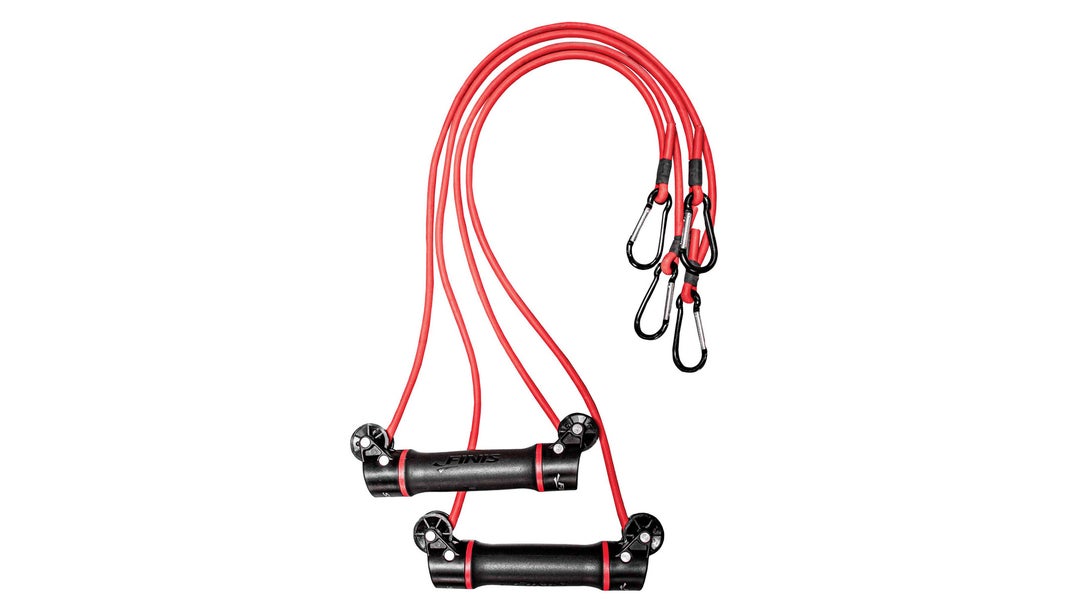
Before you read any further, YES, you can simply use round tubular stretch bands looped around a post and tied in loops for your hands. YES, you can even make a DIY upgrade and loop your (sadly dormant) hand paddles into those loops for even better effect. But the beauty of buying this setup is that you know it’ll last, it’ll be ready for you to go when it’s time to work out, and you won’t have to fool around with loop sizings. Simply put: If you can, just buy this setup and get to a-pullin’. The unique rotating handles help with proper forearm positioning, and the carabiner give you more options for attachment. Can’t find them or want to save some cash for TP? Make ‘em.
The Best Dryland Gear For Swim Training When The Pool’s Closed (Without Spending A Fortune)
Halo Swim Training System
$500, Haloswimtraining.com
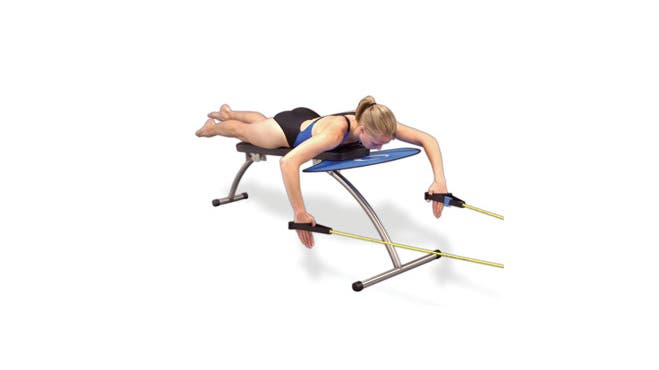
While this dryland gear for swim training option is considerably more costly than the simple stretch cords and a workout bench you might already own, this bench has some very cool (and important) extra features. First, it does fold nearly flat for easy storage under a bed or in an attic, but more than that, it comes with a range of “Halos” or plastic cutouts that affix to the front of the bench to encourage a high elbow catch and proper hand position through the front quadrant of the swim stroke. This is an area where simple stretch cords can truly fail and even lead to bad habits. In the back, the bench features little “brushes” that are attached at a specific spot for proper follow-through training.
The Best Dryland Gear For Swim Training When The Pool’s Closed And Money Is No Object
Vasatranier SwimErg
$1,900, Vasatrainer.com
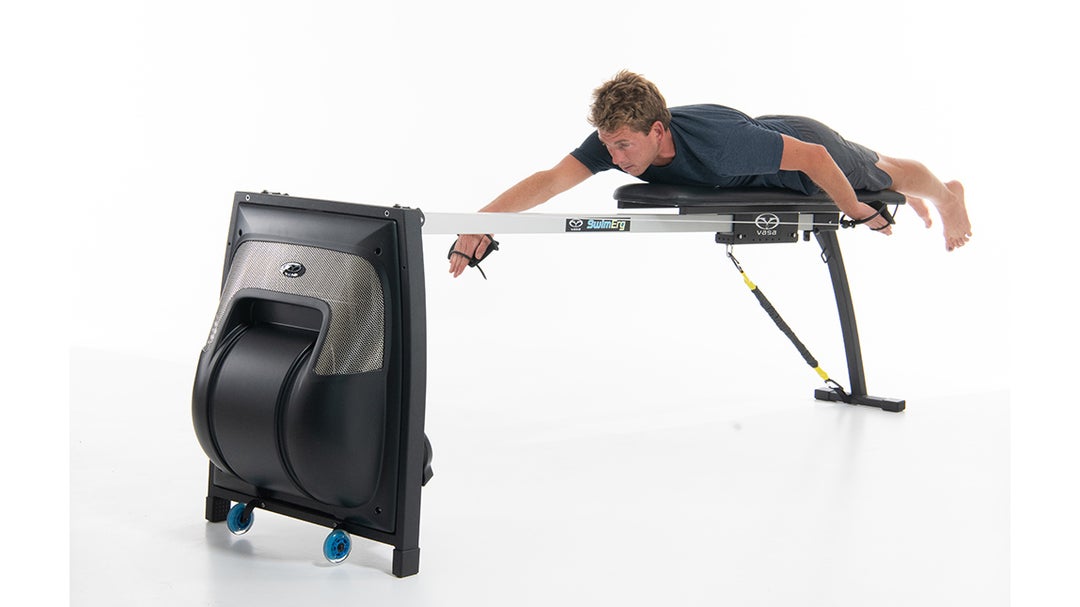
First, it’s important to note that as of this original writing, Vasatrainer was forced to close due to their state’s restriction on businesses during the coronavirus, but when they get back up and running, this is probably the most effective, efficient, and accurate way to replicate swimming when you can’t go to a pool. Using a fan flywheel with various resistance settings, you’ll get an excellent swim simulation without even getting wet. It’s also offered in a smaller, space-saver model for $1,600 and a power-based model for $2,200.